
Electrical and electronic products company Hubbell (NYSE:HUBB) fell short of the market’s revenue expectations in Q1 CY2025, with sales falling 2.4% year on year to $1.37 billion. Its non-GAAP profit of $3.50 per share was 6% below analysts’ consensus estimates.
Is now the time to buy Hubbell? Find out by accessing our full research report, it’s free.
Hubbell (HUBB) Q1 CY2025 Highlights:
- Revenue: $1.37 billion vs analyst estimates of $1.38 billion (2.4% year-on-year decline, 1.3% miss)
- Adjusted EPS: $3.50 vs analyst expectations of $3.72 (6% miss)
- Adjusted EBITDA: $285.7 million vs analyst estimates of $301.6 million (20.9% margin, 5.3% miss)
- Management reiterated its full-year Adjusted EPS guidance of $17.60 at the midpoint
- Operating Margin: 17.5%, up from 16.3% in the same quarter last year
- Free Cash Flow Margin: 0.8%, down from 3.7% in the same quarter last year
- Market Capitalization: $19.46 billion
“Our results in the first quarter were driven by continued strong operating performance in our Electrical Solutions segment and a return to organic growth in Grid Infrastructure, offset by anticipated softness in Grid Automation and the impact of higher cost inflation” said Gerben Bakker, Chairman, President and CEO.
Company Overview
A respected player in the electrical segment, Hubbell (NYSE:HUBB) manufactures electronic products for the construction, industrial, utility, and telecommunications markets.
Sales Growth
A company’s long-term performance is an indicator of its overall quality. Even a bad business can shine for one or two quarters, but a top-tier one grows for years. Over the last five years, Hubbell grew its sales at a tepid 4.6% compounded annual growth rate. This wasn’t a great result compared to the rest of the industrials sector, but there are still things to like about Hubbell.
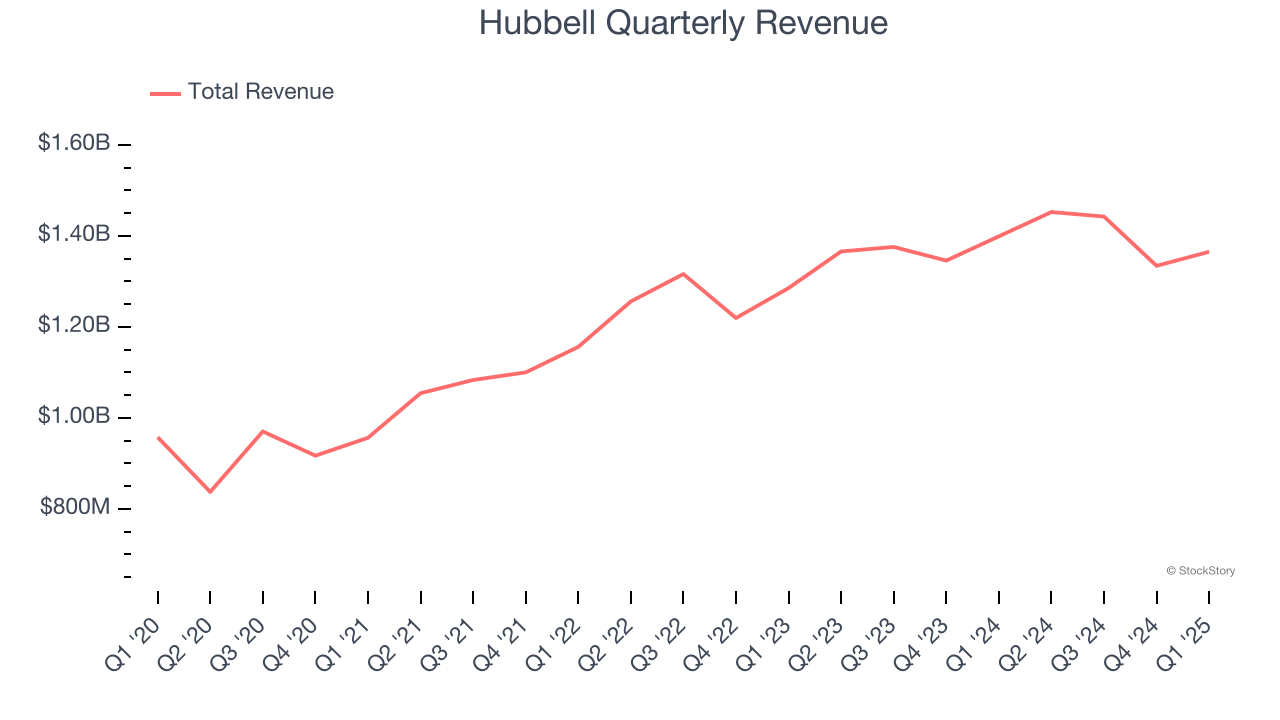
Long-term growth is the most important, but within industrials, a half-decade historical view may miss new industry trends or demand cycles. Hubbell’s annualized revenue growth of 5% over the last two years aligns with its five-year trend, suggesting its demand was consistently weak. 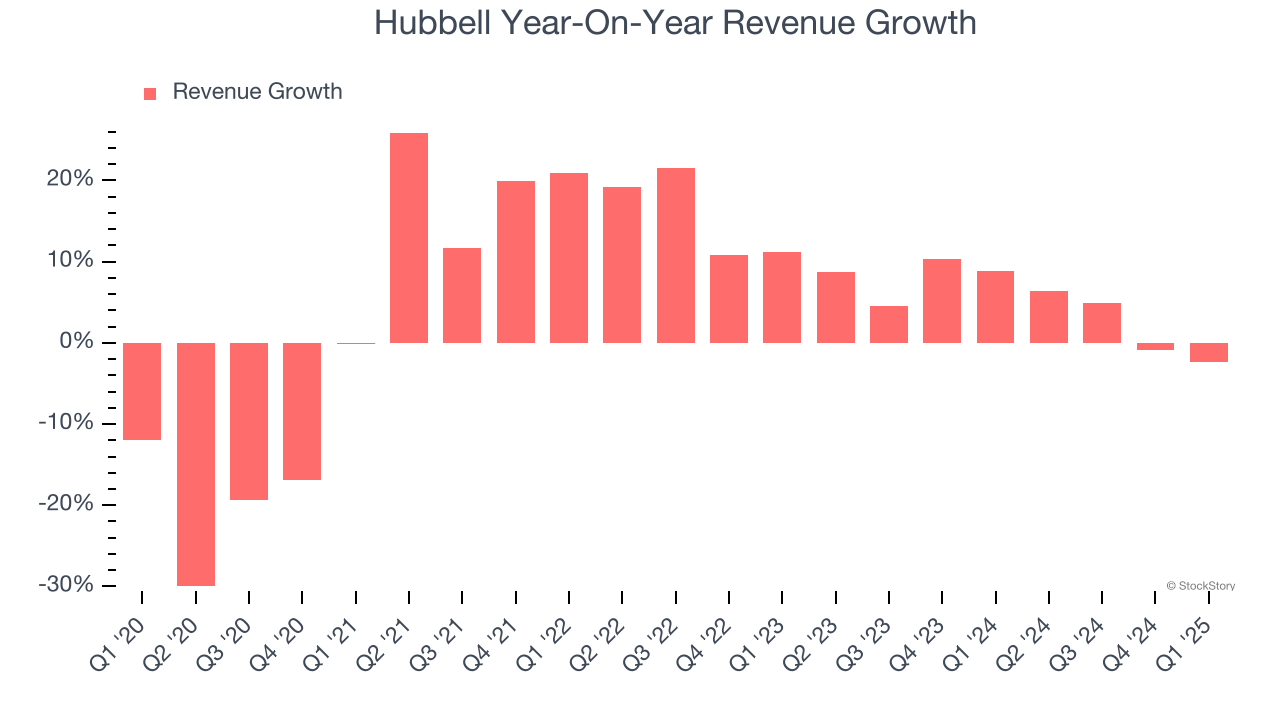
This quarter, Hubbell missed Wall Street’s estimates and reported a rather uninspiring 2.4% year-on-year revenue decline, generating $1.37 billion of revenue.
Looking ahead, sell-side analysts expect revenue to grow 6.2% over the next 12 months, similar to its two-year rate. Although this projection indicates its newer products and services will catalyze better top-line performance, it is still below average for the sector. At least the company is tracking well in other measures of financial health.
Here at StockStory, we certainly understand the potential of thematic investing. Diverse winners from Microsoft (MSFT) to Alphabet (GOOG), Coca-Cola (KO) to Monster Beverage (MNST) could all have been identified as promising growth stories with a megatrend driving the growth. So, in that spirit, we’ve identified a relatively under-the-radar profitable growth stock benefiting from the rise of AI, available to you FREE via this link.
Operating Margin
Hubbell has been a well-oiled machine over the last five years. It demonstrated elite profitability for an industrials business, boasting an average operating margin of 16.5%.
Looking at the trend in its profitability, Hubbell’s operating margin rose by 6.2 percentage points over the last five years, as its sales growth gave it operating leverage.
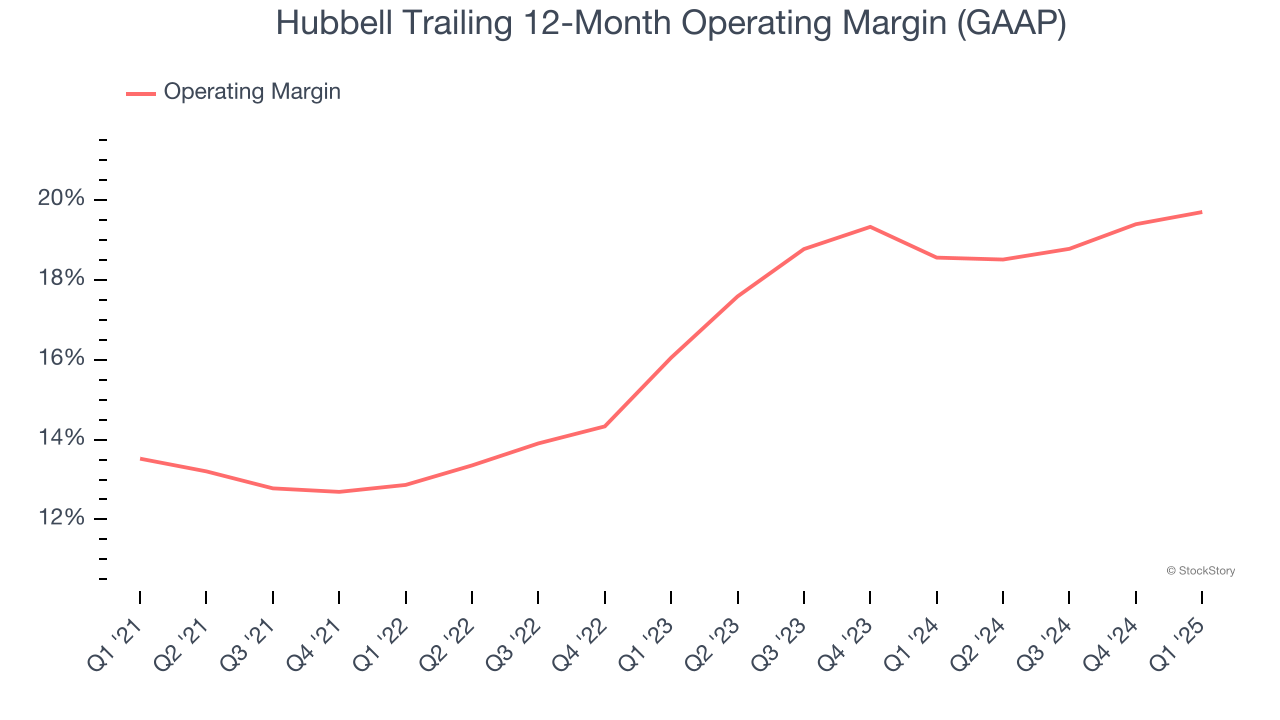
In Q1, Hubbell generated an operating profit margin of 17.5%, up 1.2 percentage points year on year. The increase was encouraging, and because its operating margin rose more than its gross margin, we can infer it was more efficient with expenses such as marketing, R&D, and administrative overhead.
Earnings Per Share
We track the long-term change in earnings per share (EPS) for the same reason as long-term revenue growth. Compared to revenue, however, EPS highlights whether a company’s growth is profitable.
Hubbell’s EPS grew at a spectacular 15.4% compounded annual growth rate over the last five years, higher than its 4.6% annualized revenue growth. This tells us the company became more profitable on a per-share basis as it expanded.
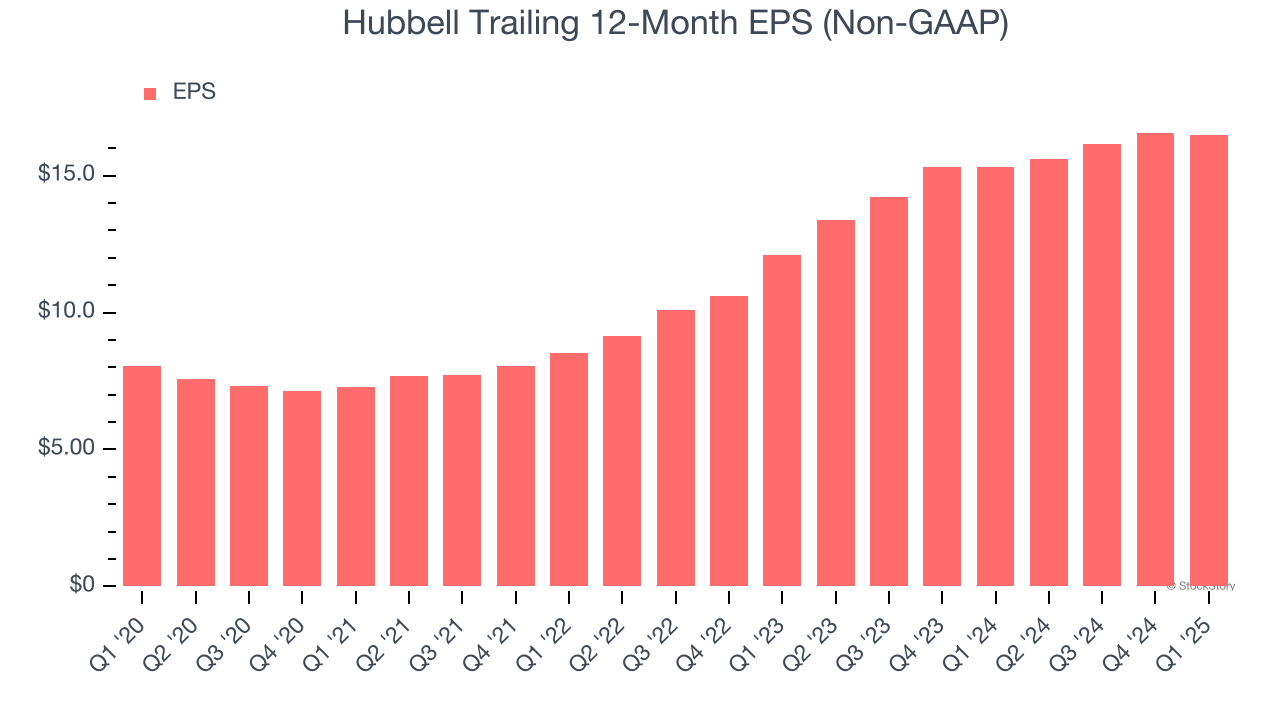
We can take a deeper look into Hubbell’s earnings to better understand the drivers of its performance. As we mentioned earlier, Hubbell’s operating margin expanded by 6.2 percentage points over the last five years. On top of that, its share count shrank by 1.5%. These are positive signs for shareholders because improving profitability and share buybacks turbocharge EPS growth relative to revenue growth. 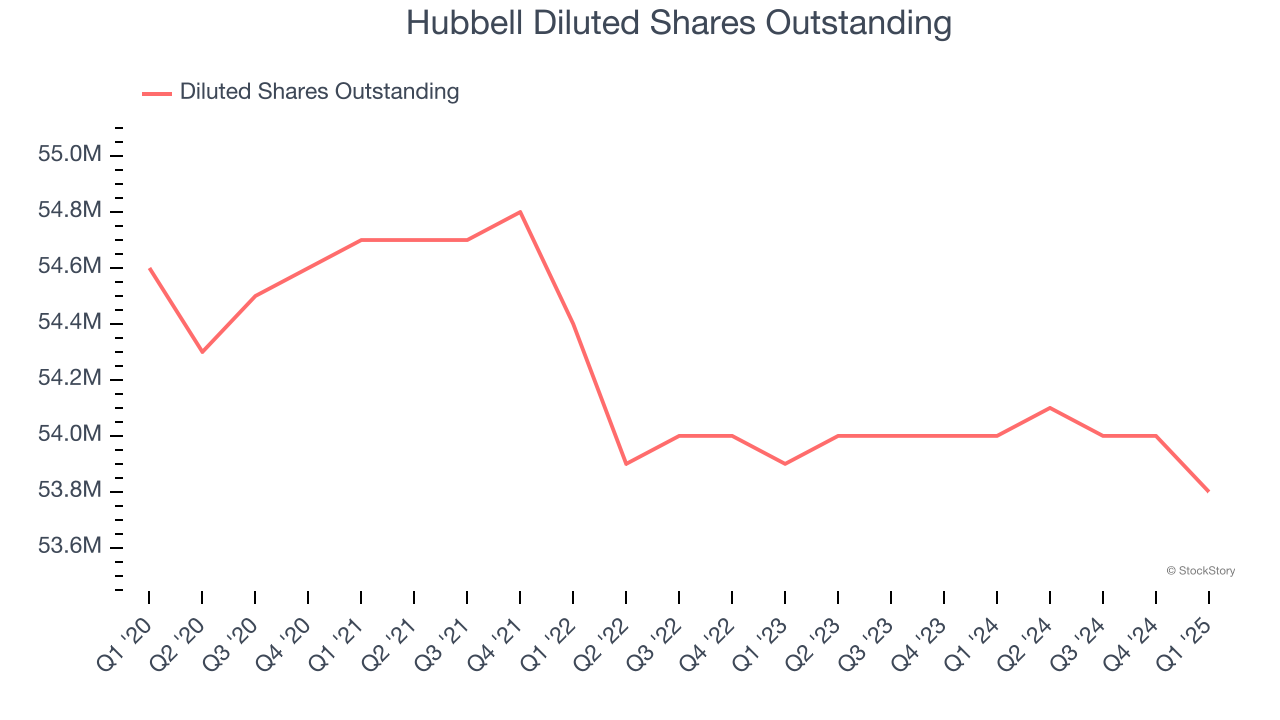
Like with revenue, we analyze EPS over a more recent period because it can provide insight into an emerging theme or development for the business.
For Hubbell, its two-year annual EPS growth of 16.6% was higher than its five-year trend. We love it when earnings growth accelerates, especially when it accelerates off an already high base.
In Q1, Hubbell reported EPS at $3.50, down from $3.60 in the same quarter last year. This print missed analysts’ estimates, but we care more about long-term EPS growth than short-term movements. Over the next 12 months, Wall Street expects Hubbell’s full-year EPS of $16.47 to grow 8.6%.
Key Takeaways from Hubbell’s Q1 Results
We struggled to find many positives in these results. Its EBITDA missed significantly and its EPS fell short of Wall Street’s estimates. Overall, this quarter could have been better. The stock remained flat at $358.88 immediately after reporting.
Hubbell may have had a tough quarter, but does that actually create an opportunity to invest right now? If you’re making that decision, you should consider the bigger picture of valuation, business qualities, as well as the latest earnings. We cover that in our actionable full research report which you can read here, it’s free.
